

Rank each group of acids in order of decreasing acidity. (1 = most acidic)
Explain your reasoning. You will have to use more than one rule in your explanation (resonance, electronegativity, atomic radius, etc.).

Draw all resonance forms for each species.
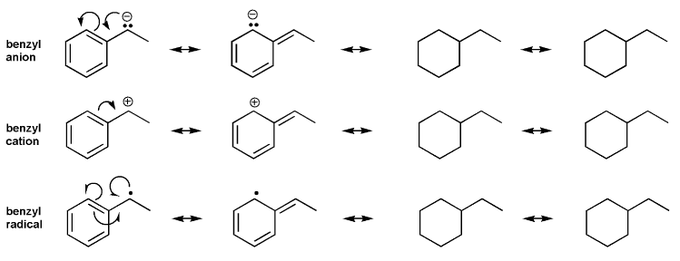
Draw all products for the two reactions below.
The allylic alkene gives two products- the 1,2 product, and the 1,4 product.
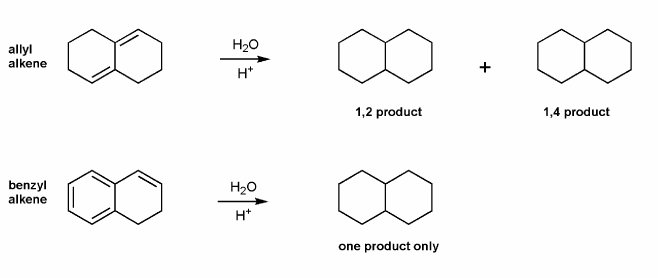
Use curved arrows to draw a mechanism for the generic electrophilic aromatic substitution (EAS) reaction below.

Let's draw resonance forms to see why some groups are EDG or EWG. (I've started you off)
Where are the positive or negative charges placed in EDG/EWG? (ortho/meta/para) Why would this affect EAS reactions?
Note: EDG = electron donating group, EWG = electron withdrawing group

-OR is an EDG and an ortho-para director. Let's draw an EAS reaction's cyclohexadienyl cation intermediates to demonstrate why this is true. I've started you off.
What's good about ortho/para? What's bad about meta?

-NO2 is an EWG and a meta director. Let's draw an EAS reaction's cyclohexadienyl cation intermediates to demonstrate why this is true. I've started you off.
What's good about meta? What's bad about ortho/para?
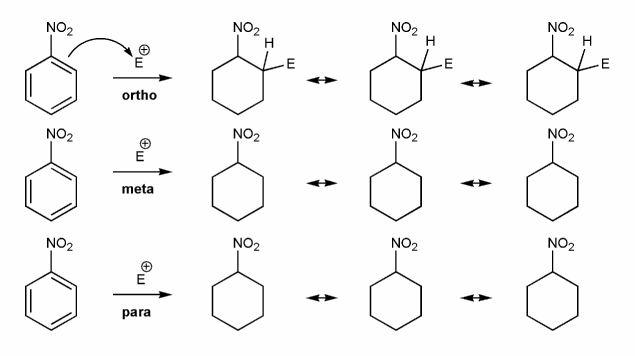
Naphthalene undergoes eletrophilic substitution at C-1.
Why is this the case, even though substitution at C-2 gives more resonance forms?

A chemist tried to prepare compound A from benzene via Friedel-Crafts alkylation and instead produced compound B.
Why did this happen? How could the chemist prepare compound A?

Phenol can be prepared from benzene and hydrogen peroxide in the presence of a really strong acid. Propose a mechanism for this reaction.
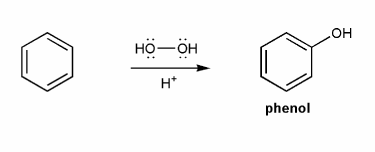
Indicate the eletrophile formed by each set of reagents/conditions below.

Draw in the arrows to show the electron flow and resonance forms in the nucleophilic aromatic substitution reaction below.
Note: Depending on the textbook, nucleophilic aromatic substitution is referred to as NAS, SNAr, or addition-elimination.
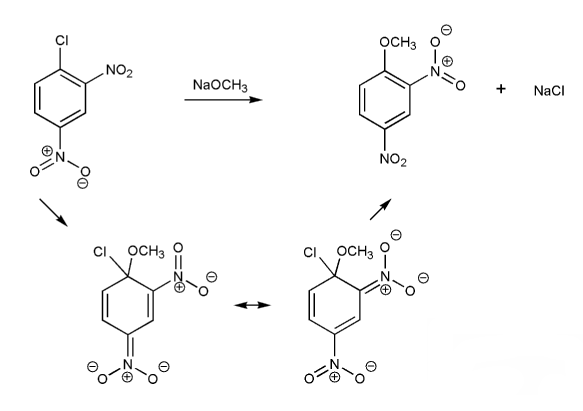
Draw a mechanism for the nucleophilic aromatic substitution (SNAr) reaction below. Show all resonance forms of the intermediate.
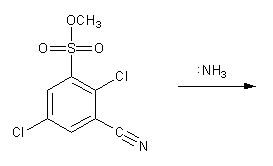
Let's go through a benzyne reaction (also called elimination-addition).
In the reaction below, the strong base (NaNH2) will form a benzyne intermediate, which when forms either ortho nitroaniline or meta nitroaniline.
Used curved arrows to show the formation of each intermediate and the final products.
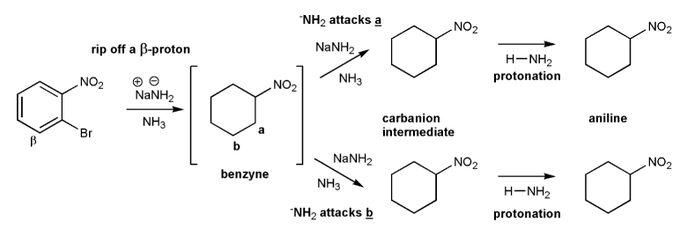
Let's go through another way to make benzyne.
First, let's form a Grignard reagent. Then, let's elminate to form benzyne.

Draw the structure of the major organic product from each reaction sequence.
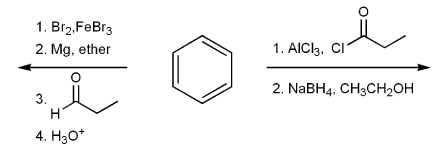
Show how to prepare vinyl benzene from benzene.

Allylic and benzylic halides tend to undergo both SN1 and SN2 substitution reactions at a faster rate than their alkyl counterparts.
For example, both allyl chloride and benzyl chloride undergo SN2 reaction at a faster rate than propyl chloride.
The same holds true for SN1 reactions: a 2° allyl or benzyl halide undergoes SN1 reaction faster than a 2° alkyl halide. Explain.
